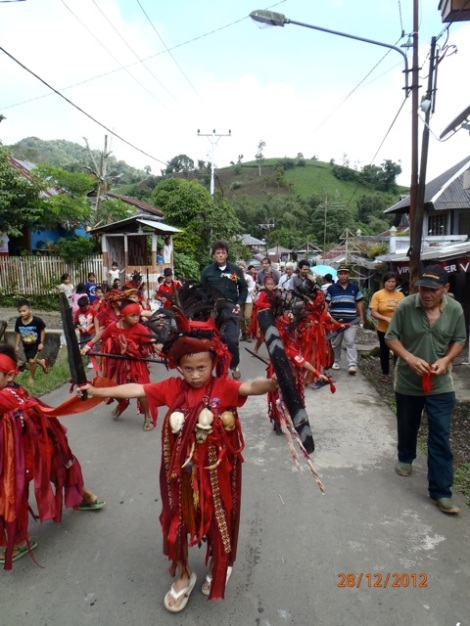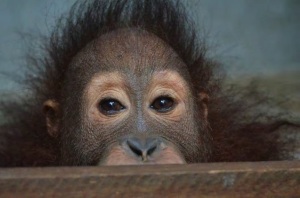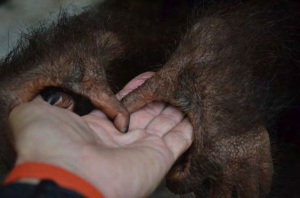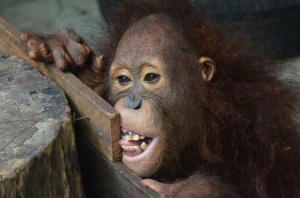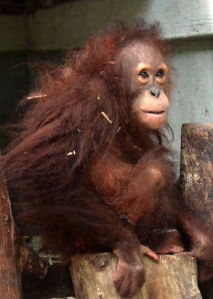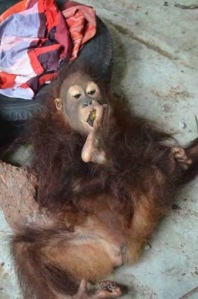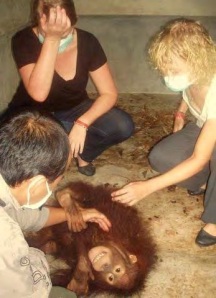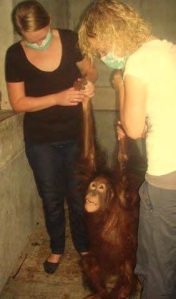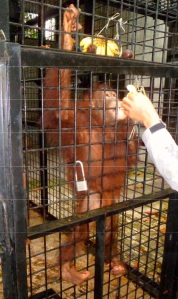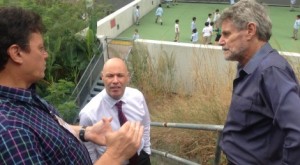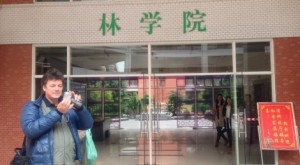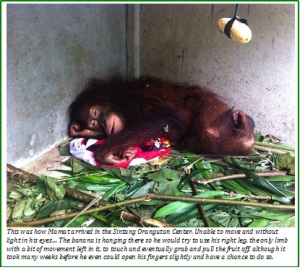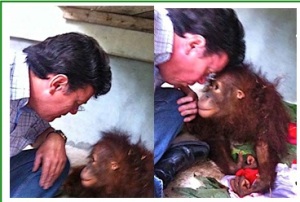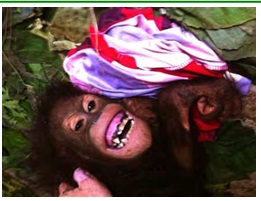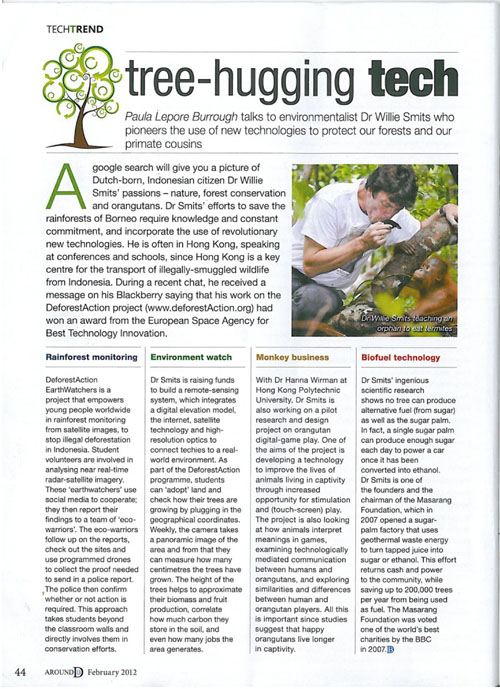A wonderful update on one of the projects that we sponsor by Dr Hanna Wirman:
Computer games: Orangutan enrichment and a possibility for communication between species

Computer games for orangutans project, Touch, has now been running for a little bit more than a year at the School of Design of the Hong Kong Polytechnic University. This past month has seen some of the biggest developments so far particularly in terms of introducing the used custom-made touch screen technology to captive orangutans. Namely, I spent almost three weeks in Indonesia introducing a recently built playroom at Tasikoki Wildlife Rescue Centre to the centre’s permanent residents, Bornean orangutan teenagers, Is and Bento. During the trip I also discussed new partnerships and had the great pleasure to visit Jogja Orangutan Centre in Yogyakarta.
While the aim of the Touch project is both to provide orangutans with enrichment and to offer possibilities for cross-species communication through gameplay, the current focus is in establishing a knowledge on what kind of games orangutans like playing and what kind of daily routines, social relationships and interests shape their play practices. This is not to assume that the whole species of Bornean orangutans would enjoy same features and aspects of gameplay, but it is necessary to know the basics of what kind of things they react to when represented on a touch screen and how they comfortably utilise such screen with their hands that, albeit similar to ours, often engage in very different practices.
And the entire trip went very well! Bento, the older orangutan, was more receptive to the idea of entering a room much smaller than their usual living environment and, after two weeks, had learned to use the screen quite nicely. Is, meanwhile, seems to take more time to feel comfortable in the playroom, but spent long periods of time in front of the screen when I last saw his play through Skype some days ago.
As one can imagine, there were moments of almost desperate frustration as well as pure joy during this unusual exercise of user research. Regarding the former, it took me some time to accept that various roof materials might appear more fascinating for the orangutans than the screen itself. But the occasions when I was offered bananas or a sack to cover my head with during the rain were priceless. I feel that I made friends for life!
This project and the two individual players keep amazing me day after day. As a topic animal gameplay is so vast that there is a real need to turn it into something that a whole group of researchers looks into. What I will address during my forthcoming conference presentations at the Crossroads Conference of Cultural Studies in Paris and Minding Animals Conference in Utrecht this summer are questions of interface design, conditions for bringing orangutans and humans to play together, and the meaning and importance of play in the lives of humans and non-human animals in general.
The work is made possible through the continuous support of Dr Willie Smits, the Masarang HK Society and the managers, animal keepers and volunteers of Tasikoki Wildlife Rescue Centre. I am very grateful to Garuda Indonesia and their most efficient Hong Kong office for their support regarding flight tickets as well as for their interest in this work that I find very important. Thanks all for this joint venture of doing wonders!
For more information and latest news of the project, see Ludus Animalis blog.
We welcome partnerships and collaborations, for inquiries please contact touchprojectinfo@gmail.com.
Dr Hanna Wirman
Project Associate
Hong Kong Polytechnic University
School of Design, M-Lab
